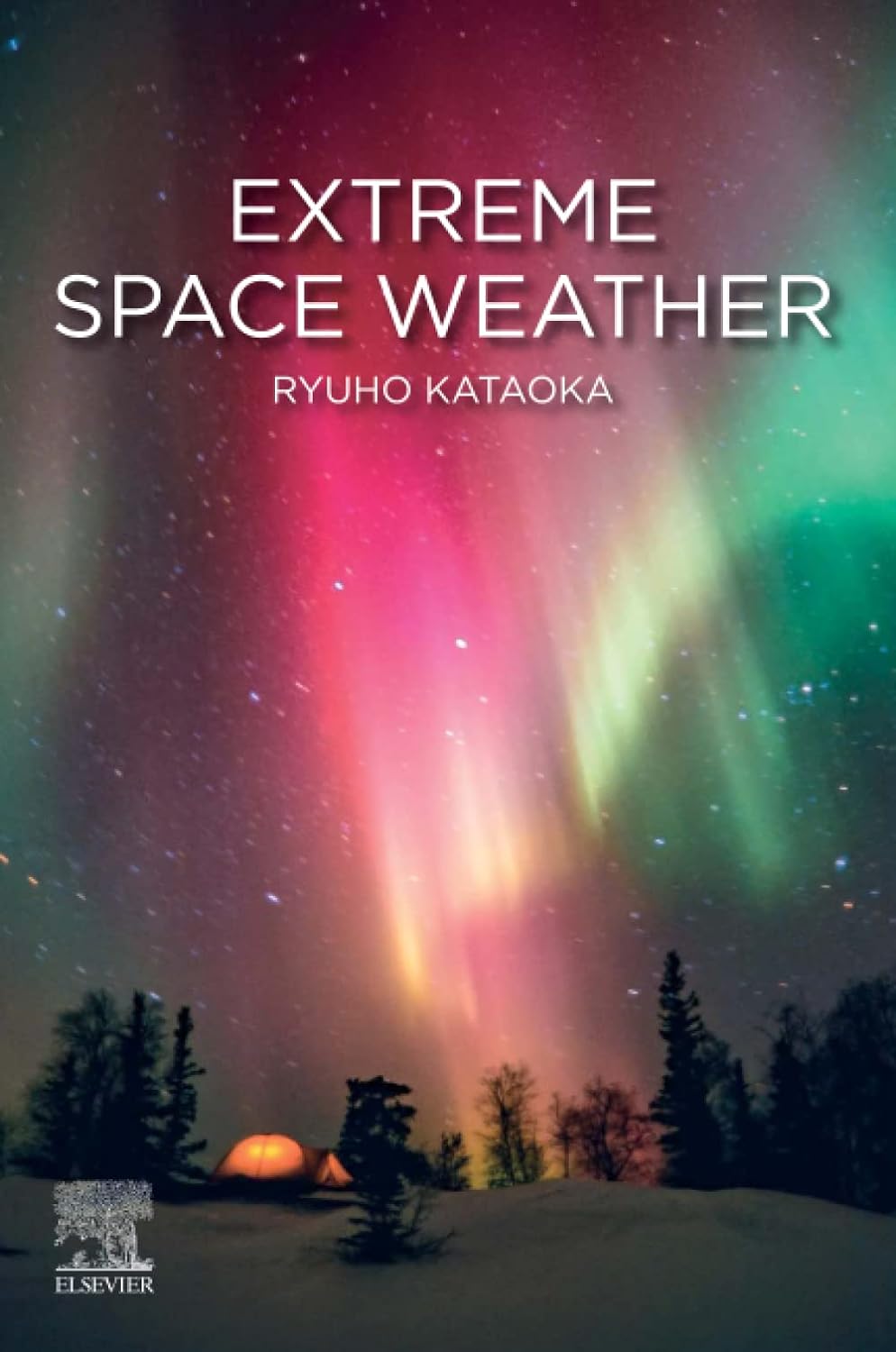RK Works
Modern society has relied heavily on advanced technologies such as satellites and they are vulnerable to changes in space environment. Consequently, the importance of space weather forecasting is growing. As we explore deeper into the near-Earth space environment, its mysteries multiply, fueling increased academic interest. Key research areas include understanding the dynamics of massive solar flares, giant magnetic storms, and their potential impacts on contemporary society.
As a researcher of space physics, I wote a book “Extreme Space Weather” (2022), targeting graduate students and researchers in a hurry. This book gives an overview of the underlying physics, datasets on complex space weather phenomena, historical event studies traveling back in time, the latest advancements in simulation research, forecasting challenges, and the potential ramifications for future lunar and Mars exploration.
We held the international workshop at Bern in 2018 to review our current scientific understanding of the terrestrial aurora. The book “Auroral Physics” (2021) is a collection of review papers detailing theoretical and observational aspects of characteristic auroral morphologies changing with local time, latitude, and activity level.
Extreme Space Weather

Chapter 1 - Introduction to space weather
Weather and climate matter in our daily life to plan our short-term and long-term future activities. The space weather and space climate also influence our high-tech society. The variable situations of sunspots, solar wind, cosmic rays, geomagnetic field, and auroras are typical examples of the space weather. This chapter briefly introduces the basic items of space weather with some examples of extreme space climate, such as Maunder Minimum, geomagnetic reversals, and nearby supernova occurrence.
Chapter 2 - Disturbed space weather
Space is explosive. That is relatively a new concept. Against a classic Newtonian recognition of stars in the heaven, heavy stars die and explode in the galaxy, which are observed as supernovae. In our solar system, plasma environment is unstable and often exhibits explosions. The explosive energy release from the Sun can be categorized as electromagnetic burst (solar flares), plasma eruptions (coronal mass ejections), and accelerated energetic particles (solar protons). The magnetosphere of the Earth also shows similar explosions called auroral substorms, sharing the same principle of plasma physics.
Chapter 3 - Technological vulnerability and statistics
People living on the Earth rely on the electricity, and the modern society is supported by high-tech infrastructures vulnerable to extreme space weather. Several serious accidents in the past teach how to prepare against and mitigate space hazards, which is also valuable to speculate the worst scenario. The probability of suffering from extreme events can be statistically evaluated, which is necessary to design a robust system and the safety criteria.
Chapter 4 - Forecasting space hazards
Forecasting flares and magnetic storms are separately working in different time schedules. For flare-related hazards we need to forecast when it erupts, while for CME-related hazards we have more time and forecasting magnetic storms can start even after CME detection. Forecasting models in use are still mostly empirical, but physics-based models are also working in every place. In real operations, mixtures of both empirical and physics-based models are used to achieve a robust space weather forecast. All of the models have the same problem that they might be tuned for nonextreme conditions, and it is not clear how well they perform for the most extreme cases. Real-time monitoring observations are therefore essential to constrain and drive these forecast models to prepare against the possible hazards caused by extreme events.
Chapter 5 - Toward the Moon and Mars
Private companies in the USA have started space trips in July 2021. China is operating a new space station at LEO (low-Earth orbit). NASA is planning to build a Moon-orbiting space station called Gateway. They are also planning to build space colonies on the Moon and Mars. The Moon and Mars are the extreme space environment. On the Moon and Mars and during the deep-space cruising to these astronomical objects, solar energetic particles and galactic cosmic rays are the most relevant space weather and space climate, respectively, because of the significant radiation dose to human body and electronics.
Auroral Physics

Popular descriptions often attribute the aurora to the interaction of charged particles from the solar wind with atoms in the upper atmosphere. In fact, most auroras are not the result of direct entry of solar wind particles. Rather, as detailed in this volume, auroral particle acceleration and generation of auroral forms occur primarily within the magnetosphere. Importantly, many key aspects of the aurora – most notably, the physical mechanisms responsible for the generation of discrete arcs – are still unexplained, and auroral physics continues to be an active area of scientific research. Each review chapter therefore includes a summary of open questions for further investigation. Providing the first comprehensive review of the terrestrial aurora in two decades, this book will aid both active researchers and newcomers interested in understanding the current state of the field.
Small-scale dynamic aurora
Small-scale dynamic auroras have spatial scales of a few km or less, and temporal scales of a few seconds or less, which visualize the complex interplay among charged particles, Alfvén waves, and plasma instabilities working in the magnetosphere-ionosphere coupled regions. We summarize the observed properties of flickering auroras, vortex motions, and filamentary structures. We also summarize the development of fundamental theories, such as dispersive Alfvén waves (DAWs), plasma instabilities in the auroral acceleration region, ionospheric feedback instabilities (IFI), and the ionospheric Alfvén resonator (IAR).
Projects
Currently working on:
- AuroraXcosmic project (AJ1007)
- AI-emulator project (KAKENHI 24H00277)
- Space weather team of ISS/CALET
